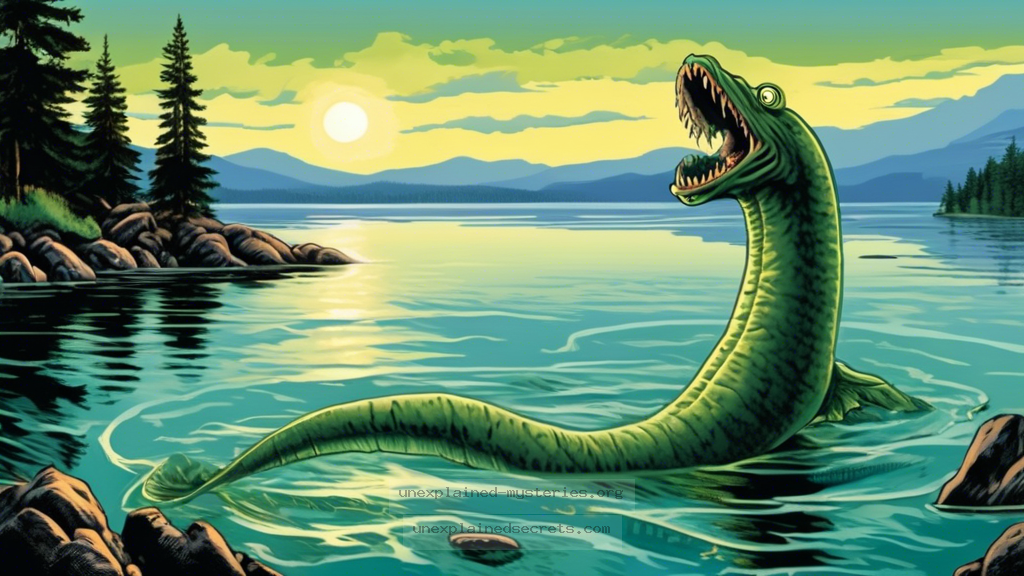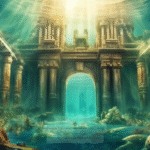What Lies Beneath the Surface of Lake Champlain: The Quest for Champ, the Elusive Lake Monster?
What Lies Beneath the Surface of Lake Champlain: The Quest for Champ, the Elusive Lake Monster?
The legend of Champ, the purported lake monster residing in the murky depths of Lake Champlain, captivates the imagination of cryptozoologists and enthusiasts alike. With sightings dating back to the early 19th century, the question of whether Champ is a mere myth or a real entity continues to intrigue researchers and thrill-seekers. This post delves into the mystery of Champ, exploring historical accounts, scientific investigations, and the captivating lore that surrounds this enigmatic creature.
Historical Context of Lake Champlain and Champ
Lake Champlain, nestled between New York and Vermont, is steeped in rich history, both as a strategic military location and a site of natural beauty. The lake stretches over 120 miles and is home to diverse ecosystems, making it an ideal habitat for a variety of wildlife. The first documented sighting of Champ can be traced back to 1819 when a local newspaper reported an encounter of a large creature disturbing the water. Since then, hundreds of sightings have been reported, ranging from brief glimpses of a large serpentine figure to more detailed encounters describing its size, color, and behavior.
Champ’s legend gained momentum in the 1970s when a series of photographs purportedly captured the creature. These images, though grainy, fueled public interest and spawned numerous expeditions to search for the elusive creature. Champ became a local icon, with merchandise, festivals, and even a dedicated museum celebrating the lore surrounding the lake monster.
Core Concepts: What Is Champ? Theories and Speculations
The identity of Champ has been the subject of numerous theories. Some speculate that Champ is a relic from the age of dinosaurs, possibly a plesiosaur or a giant eel. Others believe it to be a misidentified animal, such as a sturgeon or a log. Researchers have also proposed that Champ could be an undiscovered species of large aquatic animal, which, if true, could have significant implications for our understanding of biodiversity in freshwater ecosystems.
Each theory brings with it a set of implications. If Champ is indeed a living dinosaur, it would challenge our current understanding of evolutionary biology and the survival of species. Conversely, if Champ is merely a case of mistaken identity, it raises questions about the human psyche’s tendency to create legends around the unknown and the power of suggestion in eyewitness accounts.
Documented Sightings: A Closer Look at the Evidence
Throughout the years, numerous sightings of Champ have been documented, each adding to the lore surrounding this mysterious creature. One of the most famous accounts occurred in 1977 when a group of people on a boat reported seeing a large, dark shape moving through the water. This sighting was later backed by a series of photographs taken by a local photographer, though the authenticity of these images remains disputed.
Another notable sighting took place in 2005 when a team from the Discovery Channel conducted an investigation that resulted in sonar readings suggesting the presence of a large object beneath the surface of the lake. While the object could not be definitively identified, it reignited interest in Champ and led to further exploration of the lake’s depths.
| Year | Description | Source |
|---|---|---|
| 1819 | First documented sighting in local newspaper. | Newspapers |
| 1977 | Photographs taken by local photographer. | Local Reports |
| 2005 | Sonar readings indicating large object. | Discovery Channel |
Scientific Investigations: Do We Have Hard Evidence?
Despite the abundance of anecdotal evidence, scientific investigations into Champ have yielded limited results. Researchers from various institutions, including the Vermont Center for Ecostudies and the Lake Champlain Maritime Museum, have conducted studies using sonar technology and underwater cameras. These investigations aim to uncover biological evidence that could substantiate the existence of Champ.
One significant effort was the “Champ Search” expedition in 2003, where scientists employed advanced sonar technology to scan the depths of the lake. While they did locate some large anomalies beneath the surface, none could be confirmed as Champ, leading to frustration among eager cryptozoologists. The challenge lies in the lake’s murky waters and the vastness of the area, which makes conclusive evidence difficult to obtain.
Alternative Perspectives: Skepticism and Rational Explanations
Skepticism surrounding the existence of Champ is as prominent as the legend itself. Critics argue that many of the sightings can be attributed to misidentifications or hoaxes, particularly given instances where people have admitted to fabricating stories for attention or profit. Additionally, scientists point out that the biological feasibility of a large, undiscovered creature living in Lake Champlain is slim, given the ecological conditions and the lake’s history of extensive study.
Furthermore, the psychological aspect of the sightings cannot be overlooked. The human tendency to perceive shapes and patterns in ambiguous stimuli, known as pareidolia, may lead individuals to see what they want to see in the lake’s surface disturbances. The power of folklore and local culture also plays a crucial role in perpetuating the legend, making it a fascinating case study in how myths can evolve and persist over time.
Common Misconceptions: Myths vs. Facts
Several misconceptions about Champ persist within public discourse. One common myth is that Champ is a single entity, when in fact, many reports describe different creatures. This raises the possibility that multiple unidentified species could inhabit the lake, rather than just one legendary monster. Another misconception is that Champ sightings are recent phenomena; however, evidence suggests that narratives about large creatures in the lake date back centuries.
Additionally, some people believe that Champ is purely a local phenomenon, but researchers have noted similar legends across the globe, such as the Loch Ness Monster in Scotland and Ogopogo in Canada. These comparisons highlight a broader cultural fascination with cryptids and lake monsters, suggesting that such legends arise from shared human experiences with the unknown.
- Champ is a single creature rather than potentially multiple species.
- Sightings are a modern invention; they have historical roots.
- Champ is unique to Lake Champlain; similar legends exist worldwide.
Best Practices for Investigating Cryptids Like Champ
For those interested in investigating the legend of Champ or similar cryptids, it is essential to approach the topic with a balanced mindset. Here are some best practices:
- Research Thoroughly: Familiarize yourself with the historical context, documented sightings, and scientific investigations related to the creature.
- Utilize Technology: Employ tools such as sonar equipment, underwater cameras, and drones to gather data.
- Document Findings: Keep detailed records of observations, including locations, times, and conditions during sightings.
- Engage with Experts: Connect with biologists, ecologists, and cryptozoologists for insights and collaboration.
- Remain Skeptical but Open-Minded: Acknowledge the possibility of misidentifications while remaining open to new evidence.
Future Developments: The Ongoing Search for Champ
The search for Champ continues to inspire new generations of enthusiasts and researchers. Recent advancements in technology, such as improved sonar imaging and environmental DNA (eDNA) analysis, offer promising avenues for studying the lake’s biodiversity. eDNA technology allows scientists to collect genetic material from water samples, potentially identifying species previously unknown to science.
Moreover, local organizations and universities are increasingly interested in the ecological health of Lake Champlain, which may lead to more comprehensive studies that include investigations into Champ. The combination of folklore, science, and community engagement could yield exciting developments in the quest for this elusive creature.
Conclusion: The Mystery of Champ Endures
The legend of Champ, the enigmatic lake monster of Lake Champlain, is a captivating blend of history, folklore, and mystery. While scientific investigations have yet to provide definitive evidence, the stories and cultural significance surrounding Champ continue to inspire curiosity and exploration. As technology evolves and our understanding of ecosystems expands, the possibility of uncovering the truth about Champ remains tantalizingly close. Whether a myth or a hidden reality, Champ serves as a reminder of humanity’s enduring fascination with the unknown and the mysteries that lie just beneath the surface.
Other Articles
Recent Posts
- What Happened to Flight MH370? The Conspiracy Theories That Still Haunt Us
- What Secrets Lurk Within the Walls of the Infamous Trans-Allegheny Lunatic Asylum?
- What Evidence Supports the Existence of Bigfoot in the Pacific Northwest?
- What Happened to the Indus Valley Civilization? Unraveling the Mysteries of Ancient Urban Life
- Can Telepathy Be Scientifically Proven Through Laboratory Evidence?







